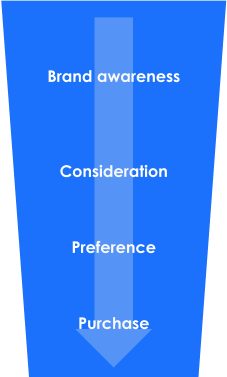DIY advertising: how self-service platforms can boost your digital advertising campaigns
‘Doing it yourself’ has been part of the British lifestyle since Joseph Moxon coined the idea in his book Mechanik Exercises back in 1677. And while that book may have sparked a sudden rise in hospital visits for the common man, DIY is a mantra that can be applied to slightly less harmful activities as well such as the growing phenomenon of DIY marketing.
So why do we do it? And how can you learn to do it well?
Taking full ownership of a project gives us more control, agility and freedom. That’s just as true for digital advertising today as it was for constructing a sundial back in 1677.
Self-service has made it easier to market your company, levelling out the playing field for start-ups and industry giants. It allows you to call the shots. Here are our top tips on how to make the most of this popular way to reach your audience.
1. Targeting the right audience
Before advertising anything, you should have a good idea of who you want to reach. It’s no use promoting your new range of dog toys to cat owners. This could not only risk making a bad first impression for your brand, but also every ad served to the owner of Mittens and her kittens, is money wasted.
Self-serve display advertising allows you to filter and refine the audience, making sure your message is delivered to the people most likely to engage with it. Geographic targeting gives you the option to hone in on specific areas. Certain platforms even include targeting by postcode, so you can find the exact audience for your needs.
To avoid your ads running when you’re not open, you can often schedule them to make sure that they only run at a time that suits you and your audience.
If you have a particular type of person in mind, many self-serve platforms can filter by gender, age, household income, employment status, education, family, even what phone they’re using, as well as other hobbies or interests.
For example, if you own a gym, you might want to run an ad campaign at the start of the year, when people are looking to burn off a few Christmas pounds. You could advertise your gym or fitness classes to anyone aged 18+, who’s shown an interest in getting more active, within 5 miles of your gym.
If you need help with creating the perfect ads that will help engage your target audience, why not read our 7 tips for creating impactful ads.
2. Giving you control
When circumstances change, the ability to react quickly is crucial. Who can forget KFC’s quick response to running out of chicken? Or CV Library’s reaction to prime ministerial changes? If you think about it, most marketing campaigns go viral because of one word… Timing. It’s not always down to the highest quality, but about being relevant.
A self-service platform offers you flexibility when you need it. You can change your message, image or target audience, even while your campaign is running. Use this flexibility to test different ads and find out what performs best for your campaign goals.
3. Save money
Money, or lack of it, is always a struggle when it comes to marketing your business. Advertising online with a self-serve platform means you don’t need the super-sized budget of McDonald’s. Unlike other forms of traditional advertising, there’s no set price, you have full control.
Having the ability to target your audience, as mentioned above, also means that your ad spend works harder for you. With audience targeting, more of your money goes towards advertising to the people who are interested in your goods and services, and it puts your company in their mind once they’re ready to make a purchase.
For help working out your budget, check out our tips on how to decide your marketing spend.
4. Report in real time
It goes without saying that learning a campaign’s successes and failures is achieving your long term business goals. It can be frustrating to put so much effort into designing an ad, only to find it didn’t impact your target audience the way you thought it would.
Real-time reporting on your ads tells you what’s working well and what isn’t. Finding out as early as possible, gives you time to make changes before it’s too late. You can monitor campaign progress regularly, meaning you don’t miss anything.
If you’d prefer to use your own analytics tools, most platforms allow you to add your own tracking methods when setting up your display ads.
5. Gain useable insights
What do you do when people don’t know your company exists? Although digital display advertising is a great way to raise awareness of your company, some self-serve platforms are limited in feeding that information back. And learning what people think of you is crucial in guiding strategy for how you attract future customers.
When choosing which platform to use, pick one that uses first-party data (e.g. feedback directly from customers). It is a higher quality way of knowing how your campaign has influenced people. Whether they recognise your brand or if they’re more likely to buy from you.
Avoid ad platforms powered by artificial intelligence or algorithms. The data they gather and report back on isn’t as high-quality and often no better than a ‘best guess’ prediction. They are also increasingly unreliable as changes in technology and privacy have made it harder to collect and use data.
Read more about how to understand the true impact of your marketing campaigns.
Give it a try
A do it yourself advertising platform is a great way to lift your campaign at a low cost. It is quick to set up, easy to run and a strong addition to your marketing mix. If you think it's the right choice for your next campaign, check out National World Ad Manager.
